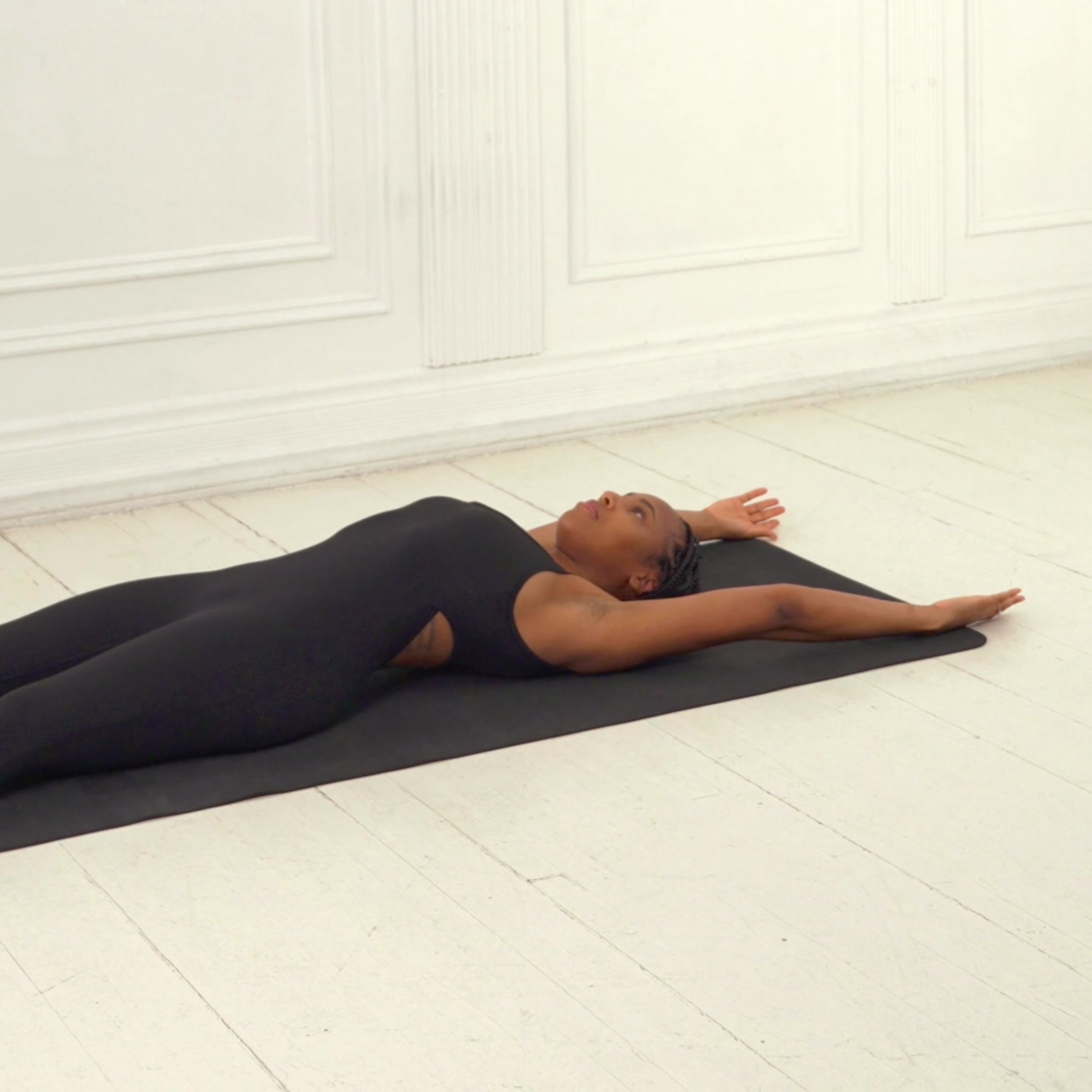Lat Side Stretch
A bodyweight stretch that lengthens the lats and quadratus lumborum to improve upper body flexibility, reduce back tension, and enhance posture; hold for 15-30 seconds per side.
About Exercise
Equipment
Body Weight
Difficulty
1/5 • Beginner
Primary Muscle Groups
Lats
Popularity Score
7
Goals
Training Style
Setup Requirements
Requires Rack
No
Requires Bench
No
Requires Spotter
No
Space Needed
Small
Noise Level
Low
Muscle Breakdown
View Muscle MapLats
10/10Teres Major
Lower Back
7/10Erector Spinae
Obliques
6/10External Obliques, Internal Obliques
Programming
Typical Rep Range
1-3 reps
Rest Between Sets
10-30 seconds • Brief rest between sides
How to Perform
Stand tall with feet hip-width apart, arms at sides, core gently engaged.
- Inhale and raise one arm overhead, keeping it close to your ear.
- Exhale and bend torso to opposite side, reaching arm over head.
- Stabilize hips or shift stretching-side hip slightly outward.
- Feel lengthening from armpit to hip; place free hand on hip for support.
- Hold for 15-30 seconds, breathing deeply.
- Inhale and slowly return to center, lowering arm.
- Repeat on other side.
Coaching Tips
Form Cues
- Keep arm close to ear.
- Maintain neutral spine.
- Hips stable.
- Reach tall.
- Relax into stretch.
- Breathe steadily.
Breathing
Inhale to prepare, exhale as you bend into the stretch, and breathe deeply throughout to relax.
Tempo
2-20-2
Range of Motion
Bend until you feel a gentle pull along the side from fingertips to hip without forward or backward lean.
Safety
Safety Notes
- Avoid if acute shoulder or back pain.
- Consult professional for injuries.
- Stop if sharp pain occurs.
- Use seated variation if balance issues.
Spotting
No spotting needed; perform solo with control.
Common Mistakes
- Leaning forward or backward.
- Overstretching into pain.
- Jerky movements.
- Holding breath.
- Uneven hip shift.
When to Avoid
- Acute shoulder impingement
- Recent back injury
- Severe spinal conditions
Flexibility Needed
- Basic shoulder flexion
- Adequate trunk mobility
Build Up First
- None; suitable for all levels
Also known as
Side Lat Stretch, Lateral Lat Stretch, Standing Side Stretch
Found this helpful?
Share your thoughts or help us improve this guide.
Similar Exercises

Supine Lat Stretch
Bodyweight
Lats

Standing Side Bend Stretch
Bodyweight
Obliques

Lateral Lunge Stretch
Bodyweight
Adductors

Side Wrist Pull Stretch
Bodyweight
Forearms

Side-Lying Thoracic Rotation Stretch
Bodyweight
Lower Back

Foam Roller Lats
Others
Lats

Side (Lateral) Shuffle
Bodyweight
Quads, Glutes

Pancake Stretch
Bodyweight
Hamstrings

Scorpion Stretch
Bodyweight
Hip Flexors

Butterfly Stretch
Bodyweight
Adductors


subscribe to our newsletter
Contact Us
hello@trainfitness.aiFind Us
130 Spadina Avenue, Toronto,
Ontario, M5V 0H4, Canada
©2025 All Rights Reserved
